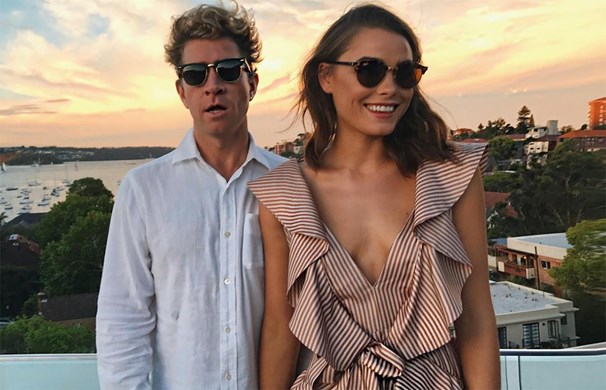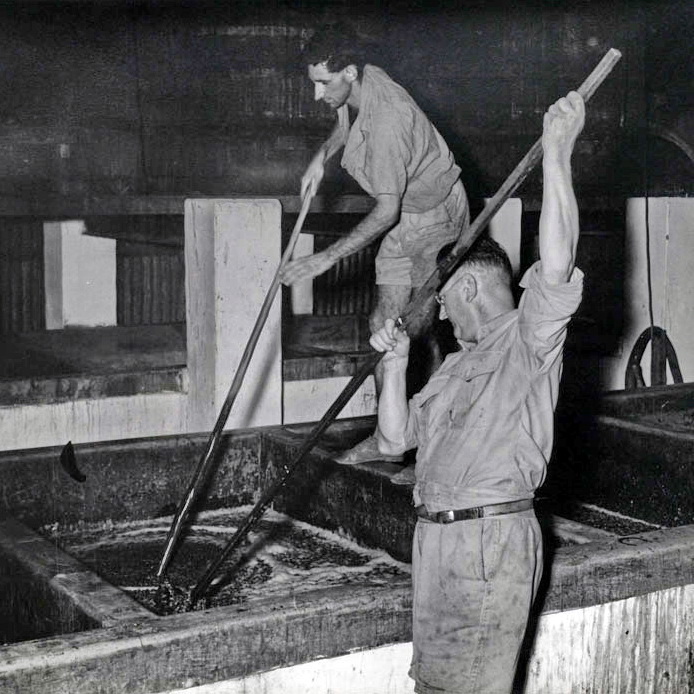The oldest Wine Family in Australia
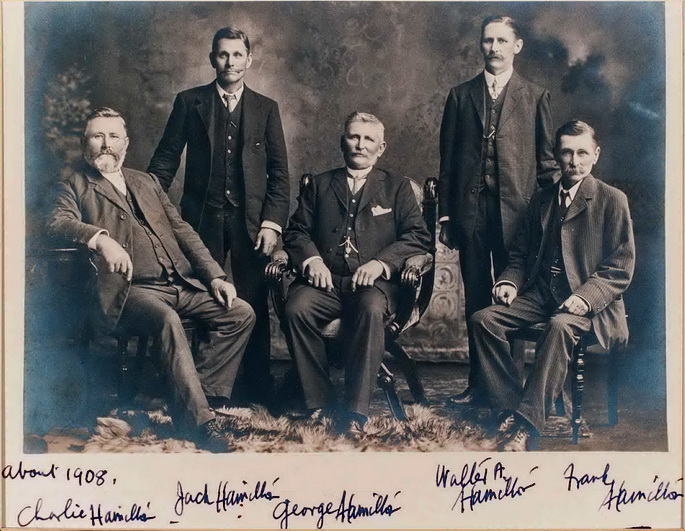
The Hamiltons have been making wine in South Australia for 180 years. The original Richard Hamilton is said to have planted the first vines down there just south of Adelaide. In the 1930s, Sydney Hamilton was the first Australian winemaker to realise that temperature controlled fermentation was the key to making fresh aromatic white table wine. His crowning achievement was Hamilton’s Ewell Moselle, which became a commercial success.
I remember Ray Kidd, the MD of Lindemans from the sixties to the eighties, telling me that Ben Ean Moselle’s biggest rival and market leader in the fifties and sixties was Hamilton’s Ewell Moselle. Our early white wines were on the sweet side, but built a bridge to the more serious wines that followed.
Hamilton’s Ewell Vineyards Pty Ltd was sold to Mildara in 1979, since that was the only way members of the now very large Hamilton clan could get their hands on their share of the money in the privately held firm. A few years earlier (1972), fifth generation Richard Hamilton – a cosmetic surgeon by trade – had established Richard Hamilton Wines at McLaren Vale at the age of 25, assisted by his father Burton and uncle Syd.
Sydney Hamilton retired not long after that but got bored and decided to buy a patch of terra rossa soil at Coonawarra in 1974 at the age of 76, and plant a vineyard from scratch. Apparently he had long had the ambition to make great cool climate Cabernets. I remember his wines from that era, which always had the comment on the back label that the grapes were handpicked by experienced women.
Sydney retired again in 1981 and sold Leconfield to his nephew Richard who eventually made it the centre of winemaking for the group under Paul Gordon. Paul had worked for Southcorp and made Rouge Homme wines for a decade until he joined Richard Hamilton in 2001.
Split personalities
I’ve followed Leconfield wines from the beginning, and often felt they’d grown too big under Paul Gordon’s direction. Don’t get me wrong, they were good wines but on the muscly side of the spectrum.
By contrast, the McLaren Vale reds were often lighter and more elegant, a reversal of what you’d expect. I also felt that the wines under the Richard Hamilton label weren’t as good as they should have been.
The exception has been the Leconfield McLaren Vale Shiraz, which began life years ago as a Coonawarra / McLaren Vale blend. Recent vintages of this wine have been outstanding.
Both Coonawarra and McLaren Vale make better reds than whites, so the winemaker s are sourcing white grapes from the Adelaide Hills and the Clare Valley. That makes a lot of sense. I haven’t seen the Leconfield winery, but the Richard Hamilton complex at McLaren Vale is an impressive place, right across the road from the Salopian Inn.
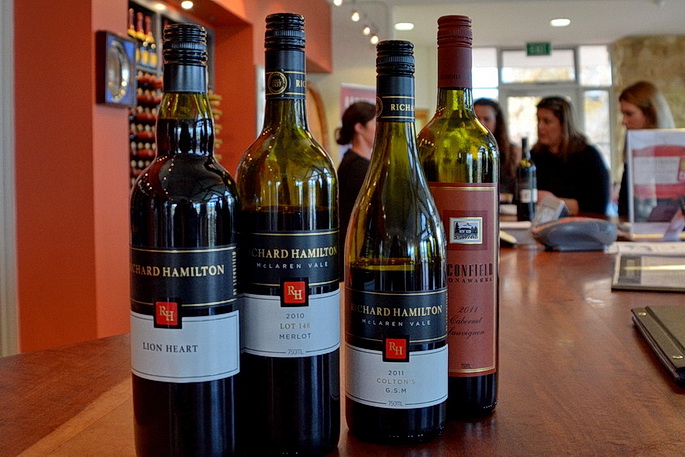
Let’s take a look at some of the current wines:
Richard Hamilton Watervale Riesling 2018 – $20 at the winery. A few samples didn’t reach me in time for this mailer, but a 2016 I opened a couple of weeks ago was a lovely elegant Riesling with years in front of it.
Richard Hamilton Adelaide Hills Pinot Gris 2018 – $20 at the winery. The same goes for this wine. These 2018s have just been released and aren’t in the shops yet.
2017 ‘The Hills’ Adelaide Hills Sauvignon Blanc – $16 at Winedirect. There’s pretty good varietal definition here, with same cat’s wee and lantana notes spicing up the tropical fruits.
Richard Hamilton Almond Grove Chardonnay 2016 – $18 at the winery. This is a perfect drinking chardy with no rough edges. Again, not a lot of ego here but it’s modern, elegant chardy with classic nuances of stonefruit and cashews. 92 points.
Richard Hamilton Signature Adelaide Hills Chardonnay 2015 – $25 at Winedirect. A slinky, delicate chardy that reminded me of fine bone china. The polish makes the wine easy to drink, the creamy texture makes you think, and the white peaches and almonds are subtle nuances. Newish French oak and malolactic fermentation have added class and a soft finish. 94 points.
Richard Hamilton Gida’s Rose 2017 – $15 at Winedirect. Gida was a grande dame of the Hamilton family, and this Rosé is said to reflect her sparkling persona. I really liked the 2016, which served up generous flavours of ripe cherries and berries, with a rich mid palate and a dry finish. I gave it 93 points for perfect pitch. I can’t imagine the 2017 being all that different, and the price is right.
Richard Hamilton Lot 148 Merlot 2016 – $21 at the winery. This Merlot slips down the hatch with great ease, because it’s silky soft and not too heavy on the plum compote. Nice restraint here, good length and medium weight. 91 points. Pretty good going but the Leconfield Merlot is a better wine (see below).
Richard Hamilton Little Road Shiraz 2017 – $21 at the winery. I asked the good people at the winery why they’re releasing 2017 reds already, and they tell me because some of the 2016s are all sold out. Nice to know, but this red took a couple of days to open up and show its vibrant nature, bright fruit, pepper and spice. Needs more time in a dark place. 92+ points.
Richard Hamilton Colton’s GSM 2016 – $16 at winedirect. This is a lighter GSM than you’d expect from McLaren Vale, but I don’t mind that. Plenty of bright fruit in a smooth wrapper; will improve for a few years. 90+ points.
Richard Hamilton Hut Block Cabernet Sauvignon 2016 – $16 at Kemenys, where you get a free bottle of Leconfield Cabernet 2016 if you order a dozen. This is the best Hut Block I’ve seen in years, in line with other SA reds from 2016. This vintage seems to have bestowed more finesse than usual on the reds, and good line and length. It’s a rich and ripe Cabernet with well-integrated oak. 92 points. Good value.
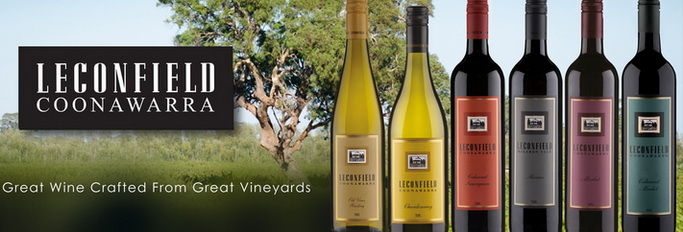
Leconfield Coonawarra Chardonnay 2017 – $20 at Winedirect. They team has made some good chardies from their Coonawarra fruit but this one didn’t grab me. Much like the Yalumba Eden Valley chardy, there’s just not enough to get your teeth into. It dances across the tongue and you think: what was that? You have another sip, but nothing more is revealed. Maybe 2017 wasn’t a great year for chardies in SA. 91 points.
Leconfield Coonawarra Old Vines Riesling 2017 – $20 at Winedirect. Some of the wines under this label have been drier than the Simpson Desert and leaner than a weight watchers diet. The 2017 is a different kind of wine, almost as aromatic as the 2017s from the Clare, and choc-full of ripe limes and perfumed flowers. Great drinking already. 94 points.
Hidden Label Coonawarra Merlot 2015 – $14 at Kemenys. Huon Hooke describes this wine as one of the best Merlots in Australia, and I can only agree. It’s a steal at the regular $20+ price, but a gift at this price if you don’t mind the plain wrapper. 94 points.
Hidden Label Reserve Coonawarra Cabernet Sauvignon 2015 – $15 at Kemenys. Leconfield Cabernet at half price. These are serious reds, and among the better Cabernets to come out of Coonawarra. A bit more robust than I like them but at this price it’s another gift. 94++ points.
Leconfield Coonawarra Cabernet Sauvignon 2015 – $27 at Nicks, with original label. Check the reviews at the link.
Leconfield Coonawarra Cabernet Merlot 2016 – $22 at Winedirect. I haven’t seen this vintage yet, but earlier vintages have been pretty smooth going, the Merlot adding richness and softness.
Leconfield McLaren Vale Shiraz 2017 – $22 at Winedirect. Oh, so young! It’s less forbidding than I expected, so perhaps 2017 made softer reds than 2016. Still, it opened up a lot over a couple of days. The fruit is intense and seductive as usual, the French oak seamless, the tannins are ripe and fine-grained. It’ll be another good red given more time. 94++ points.
Leconfield Coonawarra Cabernet Franc 2017 – $29 at the winery. A remarkable wine. On the second open day it literally burst into bloom, showing flowery aromas and sweet fruit characters that reminded me of the fruity, elegant reds of Chinon and Bourgueil on the Loire (which are made from the same variety). Charming and pretty, not complex. 93 points. It’s worth trying a bottle if you’re curious, but it’s overpriced for what it is. They don’t make much of it.
More reading [and video watching] about the fascinating history of Richard Hamilton Wines
Wine Lines: How a family vineyard changed the course of Australian winemaking
http://hamiltonewell.com.au/pdfs/Final_Our_Heritage2.pdf
http://www.leconfieldwines.com/about-us/hamilton-history-gallery?category=124644
http://www.leconfieldwines.com/video-gallery
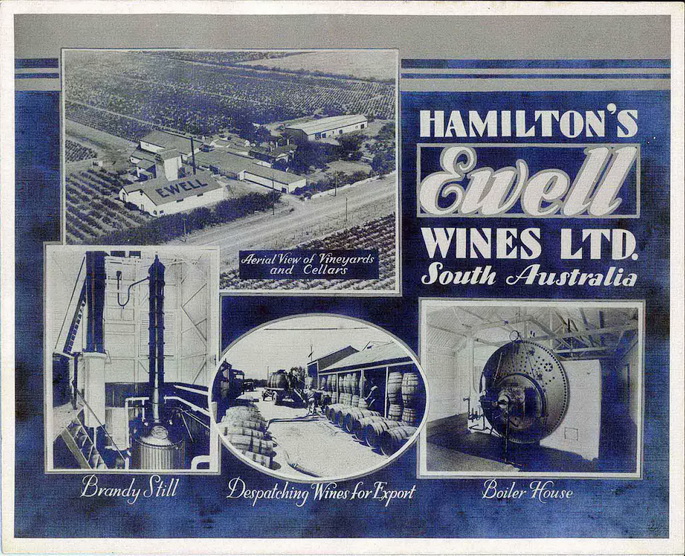

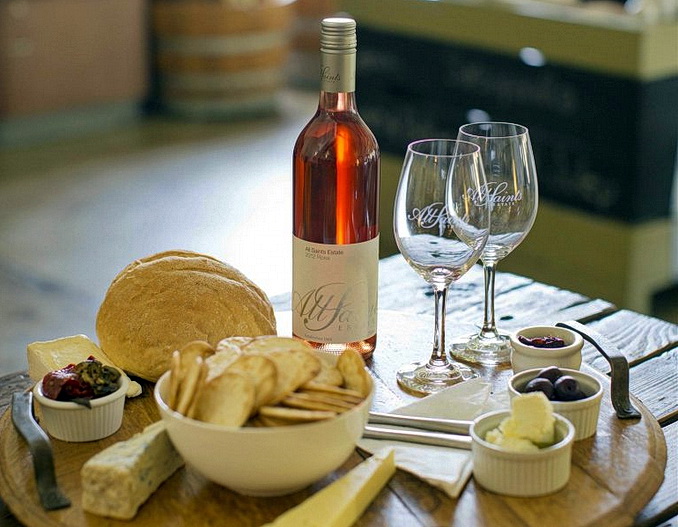
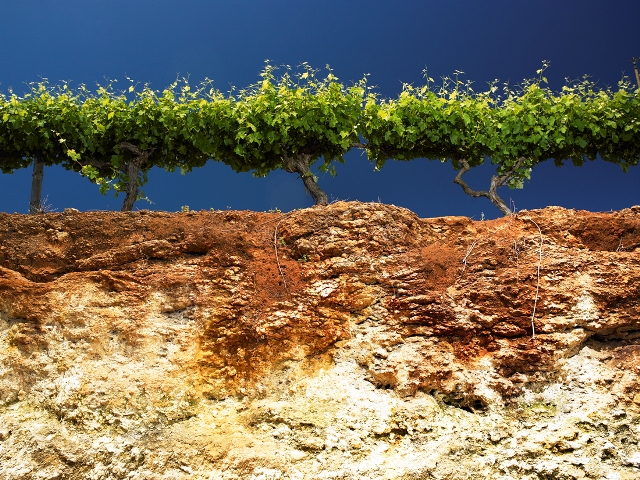
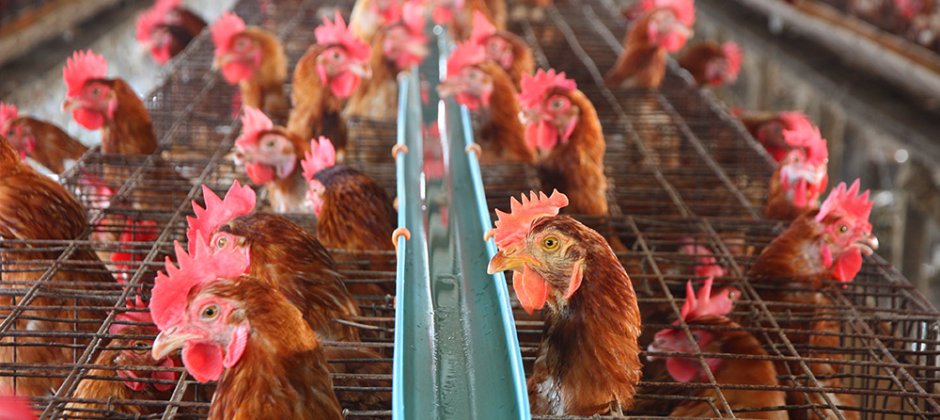
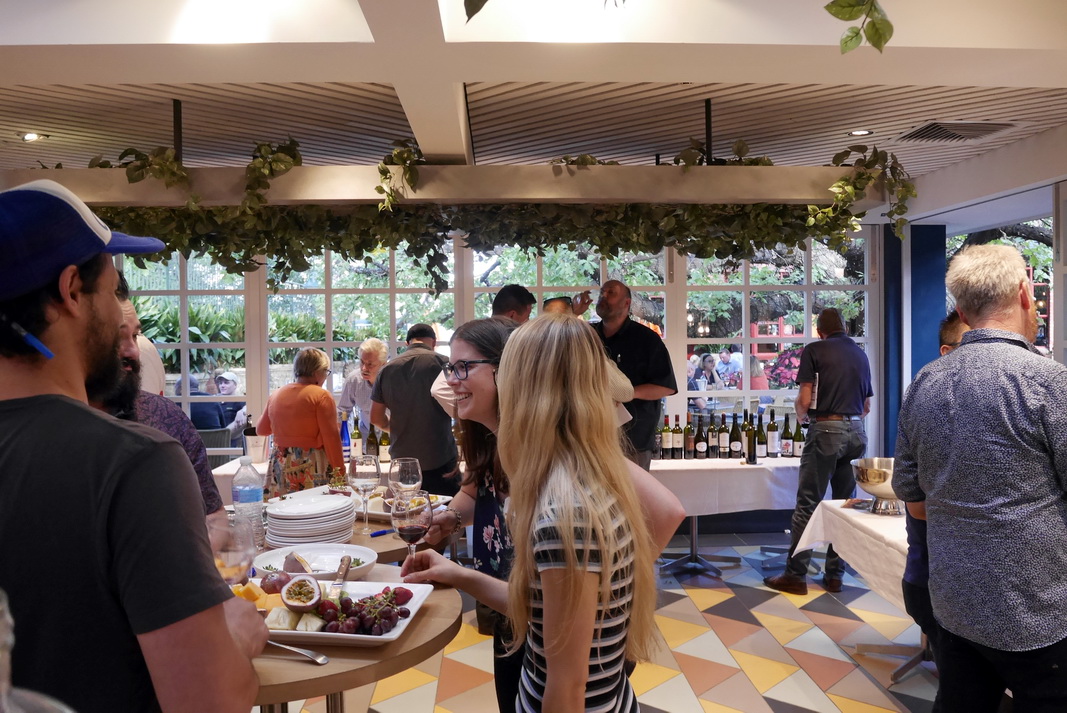 This time I focused on some of the labels I haven’t checked for a while. Printhie is one of these. The next generation has taken over, the vines are twenty years old, so there’s a new wind blowing on Mount Canobolas.
This time I focused on some of the labels I haven’t checked for a while. Printhie is one of these. The next generation has taken over, the vines are twenty years old, so there’s a new wind blowing on Mount Canobolas.